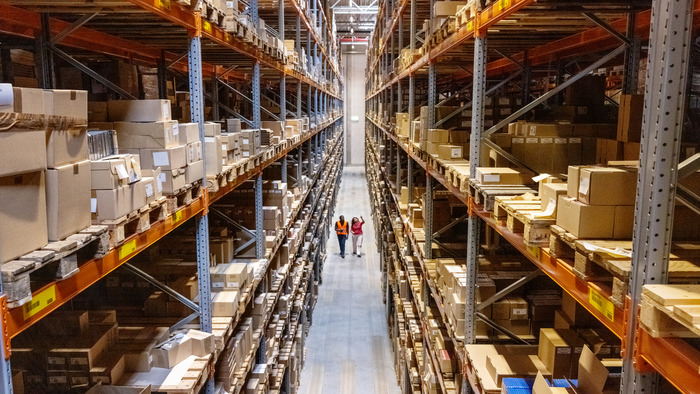Supply Chain Shifts and Port Pressures
What Retailers and Policymakers Need to Watch
- By [ Sarah Gilmore ]
- 06/09/2025
While supply chains have typically been built for efficiency, today’s dynamic trade environment has put retailers in a position of having to react to frequent policy changes and rewrite inventory and shipping plans. This is true for imports from virtually every country, and especially acute in the case of larger trading partners such as China. The unpredictability has amplified current supply chain disruptions, and is already contributing to logistical challenges that are beginning to ripple across U.S. ports.
A recent RILA poll found that over 70% of responding retailers have been reworking 2025 inventory plans, now prioritizing production and shipping of key merchandise and pausing many other items—with plans often needing revision following every new tariff announcement or pause. Lately, this supply chain roller coaster has featured trans-Pacific ocean bookings plummeting by 65% in April and early May, with a record number of canceled sailings, followed by a dramatic late-May rebound in production and shipping, with ocean rates jumping as much as 88% as retailers eye shifting tariff deadlines.
This has created significant issues in most major origin ports, such as those in China, India, Vietnam, and others. 52% of retailers reported experiencing congestion in origin ports as carriers work through considerable backlogs along with a surge in new shipments. This “pig in a python” is heading for U.S. shores, where it will likely cause congestion and supply chain delays.
Domestically, concerns have emerged around growing congestion at several major gateways—particularly in the Northeast and Gulf Coast. These issues are not being driven by high cargo volumes, but rather by existing systemic issues, a misalignment of equipment, and delays in clearing bonded cargo, much of which is tied to tariff-related uncertainty.

Similar patterns are now being reported in Gulf Coast ports like New Orleans, where equipment dislocation—particularly chassis and empty containers—is creating bottlenecks for both imports and exports. Terminal operators on the West Coast are monitoring these developments closely, with some warning that similar disruptions could surface in Southern California within the next month if trends continue.
These operational challenges are already having downstream effects. Exporters are struggling to secure appointments to deliver containers, sometimes missing shipping windows, which further complicates scheduling and increase costs. At least five ocean carriers have reported direct impacts at East Coast terminals, underscoring the systemic nature of the issue.
In response to rebounding volumes from retailers and other shippers, ocean carrier lines have added about 18% more capacity. A volume surge of that magnitude could potentially translate to record numbers in June and July, with leading gateways like Los Angeles and Long Beach easily surpassing records set during the pandemic. These volumes, on top of existing operational challenges in U.S. ports, could have dramatic effect for supply chains and for shoppers.
⚠️ Bottom Line
Current supply chain challenges driven by equipment misalignment and systemic port issues stand to worsen considerably as congestion and high volumes make their way to U.S. shores. As retailers adjust sourcing strategies in response, it’s critical to stay engaged with port authorities, carriers, and policymakers to ensure supply chain fluidity.These developments also highlight the need for continued coordination between federal agencies, port authorities, and industry stakeholders. As Congress and the administration consider broader supply chain resilience strategies, it’s critical that they understand the operational realities retailers are facing on the ground.
RILA will continue to monitor these developments and advocate for solutions that support efficient, resilient retail supply chains.
Tags
-
Supply Chain
-
Ensuring a Safe, Sustainable Future
-
Forced Labor
-
Supporting Free Markets and Fostering Innovation


